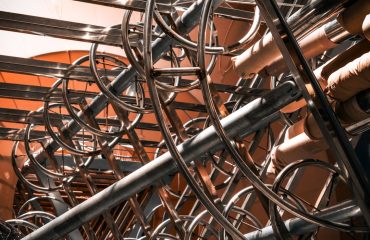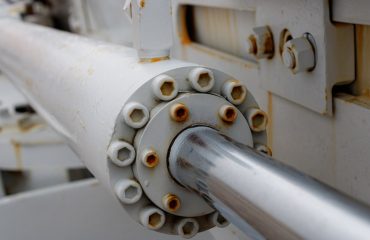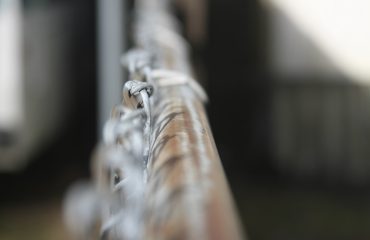High-pressure pipelines are critical infrastructure for numerous industries, transporting everything from natural gas and oil to chemicals and water. The inherent risks associated with these systems demand rigorous safety protocols and a deep understanding of potential hazards. This comprehensive guide explores key aspects of high-pressure pipe safety, providing crucial information for professionals and anyone involved in the operation or maintenance of these systems.
1. Material Selection: The Foundation of High-Pressure Pipe Safety
The choice of pipe material is paramount to ensuring the safe operation of a high-pressure system. The material must possess sufficient strength and durability to withstand the immense internal pressure and external forces it will encounter. Common materials include:
- Carbon Steel: Widely used due to its strength and cost-effectiveness, but susceptible to corrosion. Proper coatings and corrosion inhibitors are essential.
- Stainless Steel: Offers superior corrosion resistance, making it ideal for aggressive fluids. However, it can be more expensive than carbon steel.
- Ductile Iron: A good compromise between strength and corrosion resistance, often used in water distribution systems.
- High-Density Polyethylene (HDPE): A lightweight and flexible material suitable for certain applications, especially in situations where corrosion is a major concern.
Material selection should always consider the specific operating conditions, including pressure, temperature, fluid type, and environmental factors. Proper engineering calculations and adherence to relevant industry standards are crucial to ensure the selected material can withstand the expected stresses.
2. Regular Inspection and Maintenance: Preventing Catastrophic Failures
Regular inspection and maintenance are cornerstones of high-pressure pipe safety. A proactive approach to identifying and addressing potential problems before they escalate is far more effective and cost-efficient than reactive repairs after a failure. Inspections should include:
- Visual Inspections: Checking for signs of corrosion, damage, leaks, or other abnormalities.
- Non-Destructive Testing (NDT): Employing techniques like ultrasonic testing, radiographic testing, and magnetic particle inspection to detect internal flaws.
- Pressure Testing: Periodically testing the pipeline to verify its ability to withstand operating pressure.
- Leak Detection Systems: Installing sophisticated systems to quickly identify and locate leaks.
A well-defined inspection and maintenance schedule, tailored to the specific pipeline and its operating conditions, is crucial. This schedule should be meticulously followed, with records carefully maintained to track the pipeline’s condition over time.
3. Pressure Testing: Validating System Integrity
Pressure testing is a critical procedure to verify the integrity of high-pressure pipelines before they are put into service and at regular intervals throughout their operational life. This involves subjecting the pipeline to a pressure significantly higher than its operating pressure to identify any weaknesses or leaks. The testing procedure should adhere to strict safety protocols, including:
- Isolation: Completely isolating the section of the pipeline being tested.
- Pressure Monitoring: Continuously monitoring the pressure during the test.
- Leak Detection: Employing appropriate methods to detect any leaks that may occur.
- Safety Personnel: Having trained personnel on-site to oversee the test and handle any emergencies.
The pressure test should be conducted according to established industry standards and documented meticulously. The results should be carefully reviewed to ensure the pipeline meets the required safety standards before it is returned to service.
4. Leak Detection and Response: Minimizing Environmental Impact and Risk
Early detection of leaks is crucial in preventing major incidents and minimizing environmental damage. Modern leak detection systems utilize a variety of technologies, including:
- Acoustic Leak Detection: Using sensors to detect the sound of escaping fluid.
- Pressure Monitoring: Continuously monitoring pressure changes to identify leaks.
- Ground Penetrating Radar (GPR): Detecting leaks by identifying changes in soil moisture.
Once a leak is detected, a rapid and effective response is essential. This includes isolating the affected section of the pipeline, containing the leak, and initiating repairs. Emergency response plans should be developed and regularly practiced to ensure personnel are prepared to handle any leak-related emergencies.
5. Emergency Response and Personnel Training: Preparedness is Key
A comprehensive emergency response plan is essential for mitigating the risks associated with high-pressure pipe failures. This plan should include procedures for:
- Leak Isolation: Quickly isolating the affected section of the pipeline to prevent further release of hazardous materials.
- Emergency Shutdown Procedures: Clearly defined steps for safely shutting down the system in case of an emergency.
- Evacuation Procedures: Procedures for evacuating personnel from the affected area.
- Communication Protocols: Effective communication channels to alert emergency responders and relevant authorities.
- Medical Response: Plans for providing medical assistance to injured personnel.
Regular training exercises are vital to ensure personnel are familiar with the emergency response plan and can effectively respond to emergencies. This training should cover both theoretical knowledge and practical skills, including the use of emergency equipment and communication protocols.
High-pressure pipe safety is a multifaceted issue requiring a commitment to rigorous procedures, regular maintenance, and well-trained personnel. By adhering to the guidelines outlined in this guide, industries can significantly reduce the risks associated with these critical systems and ensure the safety of their employees and the environment.
Tags: High-pressure pipe safety, pipeline safety, pressure testing, leak detection, emergency response, pipeline maintenance, material selection




